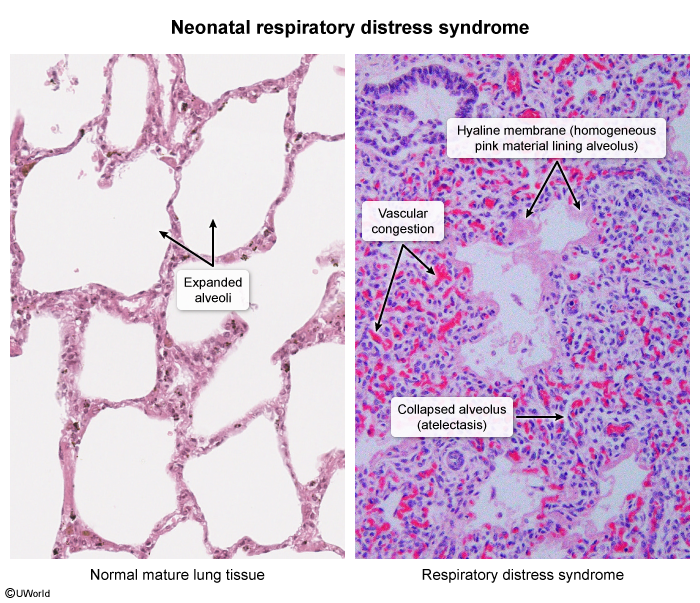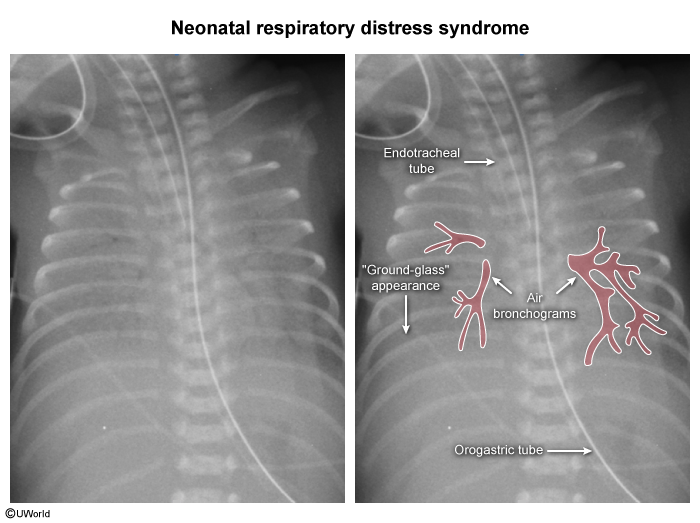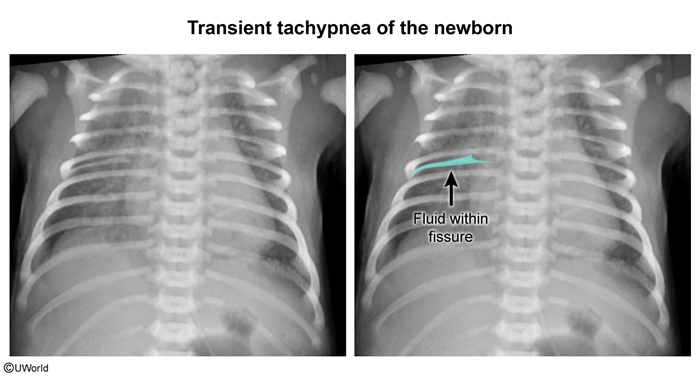Neonatal Respiratory Distress Syndrome
Article Sections
Introduction
Neonatal respiratory distress syndrome (RDS) is a disorder in which insufficient surfactant production in the preterm lung leads to alveolar collapse and impaired gas exchange. Patients have respiratory distress (eg, tachypnea, increased work of breathing, cyanosis) immediately after birth. RDS is the most common cause of respiratory distress in preterm neonates and is a major contributor to their morbidity and mortality.
Pathophysiology and risk factors
Fetal alveolar development occurs in stages, beginning with protrusion of the main bronchi from the foregut during the embryonic period (Figure 1). Airway branching continues in the pseudoglandular stage (ie, weeks 5-16 of gestation) and ends with alveolar epithelial differentiation into type I and type II pneumocytes.
- Type I pneumocytes cover approximately 95% of the alveolar surface and are involved in gas exchange.
Continue Learning with UWorld
Get the full Neonatal Respiratory Distress Syndrome article plus rich visuals, real-world cases, and in-depth insights from medical experts, all available through the UWorld Medical Library.
Figures
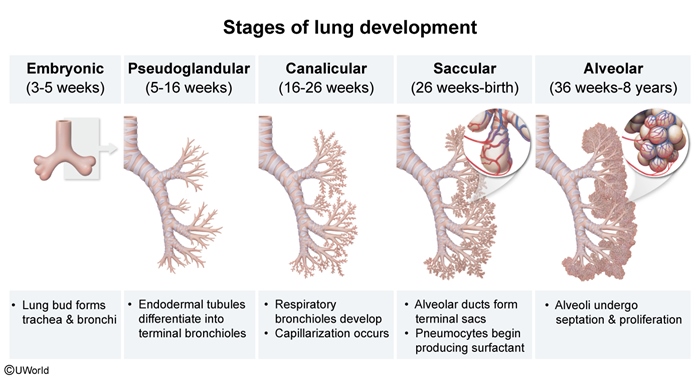
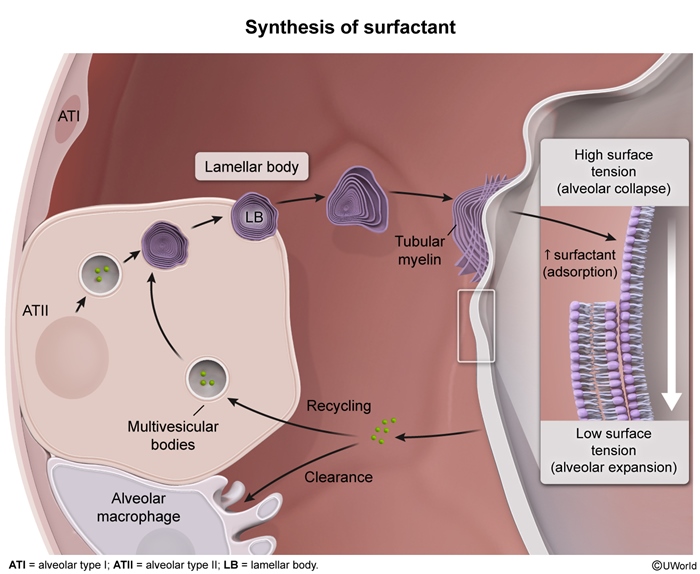
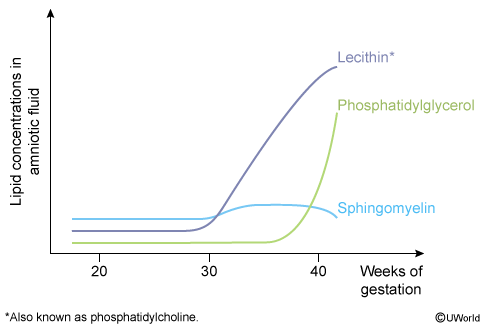
Images
